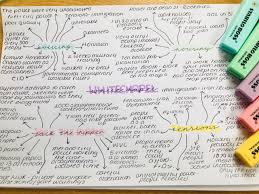situational variables affecting conformity
Cards (3)
- Key figures in milgram and also bushman’s study?
- 40 pps
- 450 volts in 15V increments
- 12.5% stopped at 300V (banging)
- 65% conf rate
- 48% location variation
- 40% prox variation
- 30% touch prox
- 21% exp absent
- 10% two peer rebels
- 2.5% teachers discretion
Bushman- different people asking by-passers to provide spare change for another confederate who had "expired parking meter"72% police52% beggar48% buisness executive - AO3 for situational variables
- ☹️ lack of internal validity- people may have guessed true aims and gone to a higher shock level as they knew exp wasn’t real, stats were way higher than predicted to be- there were some doubters about the shocks (Perry)
- ☹️ ethics- Braumind criticised for distress caused. Deception, psychological harm etc
- ☹️ disclaimer against proximity- reserve police batt 101- offered killing Jews or doing other tasks- small amount chose other tasks
- ☹️ can’t be generalised to every day obedience in real life - lab with scientists. Real life obedience harder to achieve- takes longer, maj of people probably wouldn’t commit such crimes in reality
- describe the procedure of Milgram's study
- 40 pps
- 1 naive pp and 2 confederates
- one confederate introduced as another volunteer pp
- Teacher- shocked learner if they got anything wrong. Learner- learned word pairs. Experimenter- encourages the teacher to keep going with the shocks, acts in control of the situation, wore white lab coat
- 450V was labelled XXX
- voice feedback study- learner gave mainly wrong answers and received shocks in silence until 300 volts, banged on wall and proceeded to not answer the next question
- predicted that only 1 in 1000 would go to the 450V level
